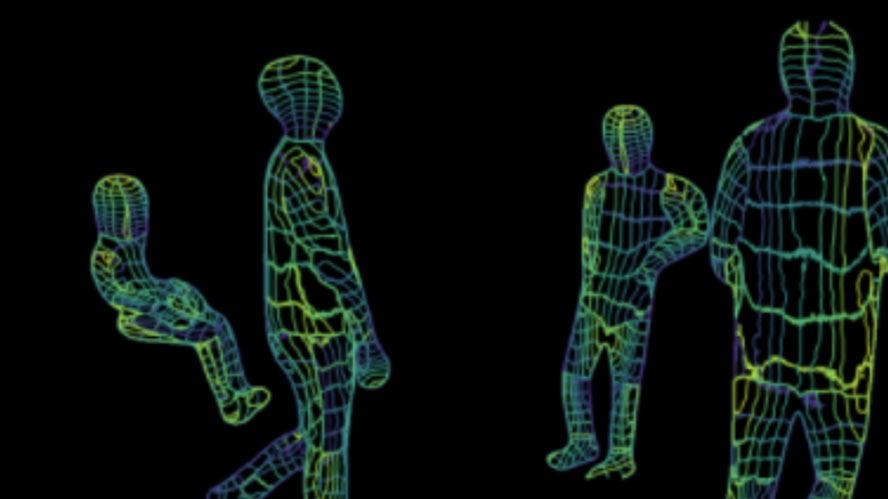
Wi-Fi Routers Used to Detect Human Locations, Poses Within a Room
Researchers at Carnegie Mellon University have been testing a system which uses Wi-Fi signals to determine the position and pose of humans in a room. In the tests, ordinary Wi-Fi routers, specifically TP-Link Archer A7 AC1750 devices, were positioned at either end of the room, along with various numbers of people in the room. AI-powered algorithms analyzed the Wi-Fi signal interference generated by the people.
Wireframe images generated from the Wi-Fi monitoring looked pretty accurate in most cases, with the researchers asserting that the estimates are as good as some “image-based approaches.” There are some advantages and attractions for using Wi-Fi over cameras, too. Firstly, the wireframe estimations of human pose are more respectful of human privacy. Secondly, Wi-Fi based perception doesn’t require light, and is capable of detecting body poses even when there are objects in the way which would obscure a traditional camera view. Another major attraction of this discovery is that the Wi-Fi routers used were cheap at just $30 each, and thus much more accessible than expensive and power hungry solutions such as radar and LiDAR.
Above you can see a set of synchronized images, with the video stills on the left, and the AI-generated Wi-Fi sensed wireframes on the right. The detection of the number of people, locations and poses looks very accurate. The paper published by the Carnegie Mellon researchers provides some detailed background on how this is done. In brief, the Wi-Fi based perception technology demonstrated here is based on Wi-Fi signal channel-state-information (CSI), which represents the ratio between the transmitted signal wave and the received signal wave. This data is processed using a computer vision savvy neural network architecture that can perform dense pose estimation. To simplify and thus speed the generation of the wireframe style human representations, the researchers broke the human form into 24 segments.
The researchers admit that the above outlined method of detecting humans and their positioning / poses is not without issues, and they still see some obvious errors in test scenarios. They graciously provided some comparison images which show “failure cases,” which they attribute to issues such as humans making unusual poses and there being too many subjects in the room at once (the engine optimally supports three or fewer individuals).

There is still plenty of work to be done, with the researchers suggesting the outlined technique could be improved in a number of ways but mainly from better public training data for Wi-Fi based perception, especially in different room layouts. While touted as a privacy sensitive way to monitor the safety of old people living alone, and being a very affordable solution for this purpose, some will undoubtedly be concerned about the new threat of their Wi-Fi router spying on them.


